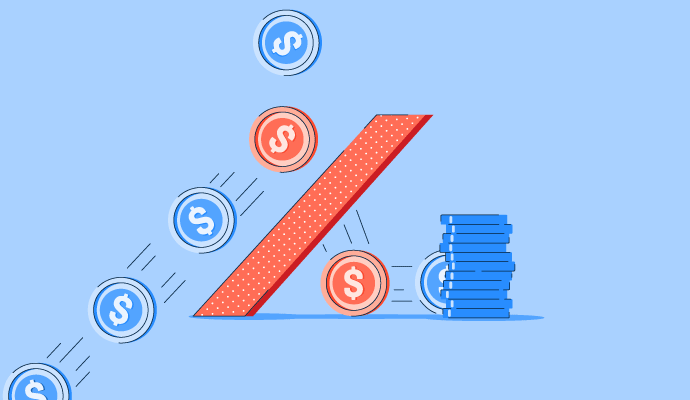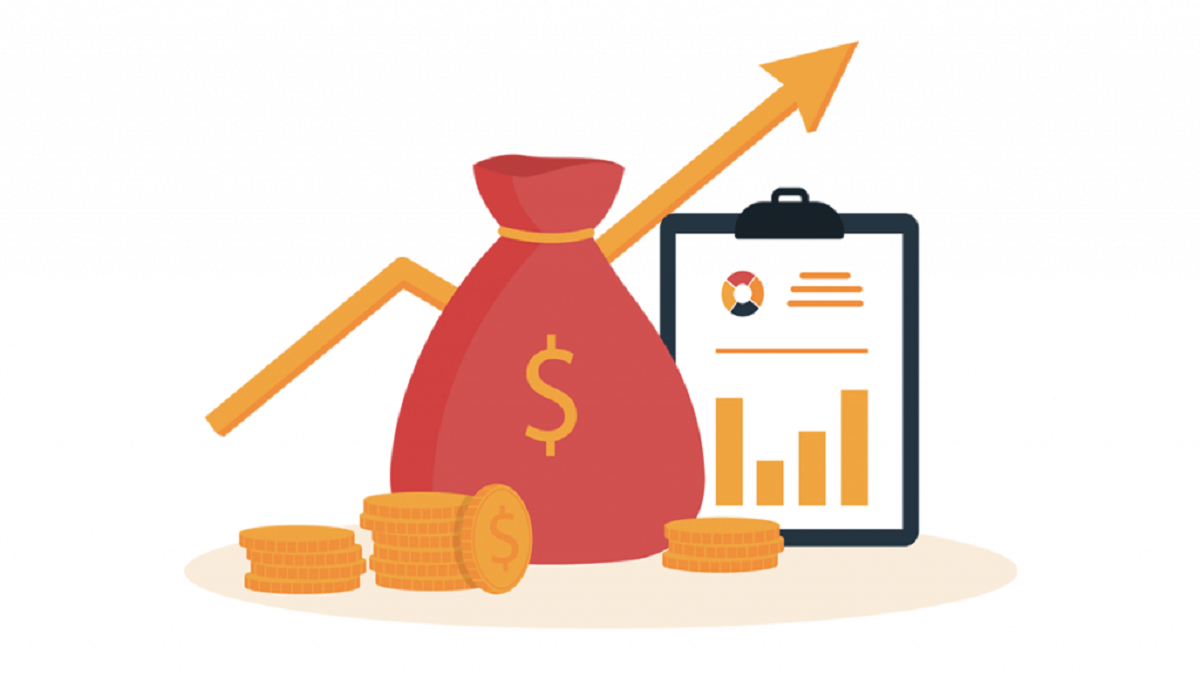In retail, ways to increase profit margins are a crucial indicator of the company’s stability and profitability. It is a metric that aids in understanding your company’s overall financial health, including revenue, cash flow, operational expenses, and pricing accuracy.
Despite knowing that increasing profit margins is the only way to succeed in business, some merchants find it difficult to implement the correct plans because they lack the necessary direction. This blog article will examine the optimal retail profit margin, explain how to compute various profit margins, and discuss some practical methods for raising retail profit margins.
How To Increase Profit Margins

1. A Little Price Increase
One of the easy ways to increase profit margins is by raising the price of products. While this may seem simple, many retailers hesitate to implement price increases due to concerns about losing customers. The fear is that higher prices will drive shoppers away or reduce demand. However, retailers can approach this decision carefully to minimize risks.
Start by comparing your prices and margins with those of competitors to ensure your pricing is competitive. Gradually raise the prices of a few select products, monitor customer reactions, and assess the impact on sales. If the price increase does not negatively affect customer behavior, you can confidently raise prices on other products, particularly those that are in high demand.
Another effective strategy is to target low-margin products. By bundling these items into kits, you can increase their perceived value, leading to higher sales and improved profit margins.
2. Track Efficiency
Acquiring, processing, and completing consumer orders and transactions rely heavily on operational efficiency. A business’s ability to streamline these processes directly affects its profit margins. By focusing on improving operational efficiency, companies can reduce costs and enhance overall productivity.
One effective way to achieve this is by automating client orders, which reduces human error and accelerates the order-to-fulfillment process. Implementing tracking software for shipping information helps keep customers informed and allows the business to monitor the status of each order, improving customer satisfaction and minimizing delays.
By ensuring that every part of the operational process is optimized, businesses can better allocate resources, reduce waste, and ultimately increase profits. In short, enhancing operational efficiency is a key factor in driving higher profit margins while maintaining a smooth and cost-effective workflow.
3. Be Mindful Of Pricing Tactics
To know the strategies to improve profit margin, it’s essential to optimize various operational costs, including rent, marketing, advertising, and electricity expenditures. By carefully managing these expenses, businesses can free up resources to invest in strategies that drive profitability.
An effective way to do this is by using demand, seasonality, and consumer behavior patterns to inform a dynamic pricing strategy. This approach helps businesses adjust their prices based on factors like market fluctuations and customer preferences, ensuring they remain competitive.
Another strategy is penetration pricing, where a business initially sets lower prices to attract customers and then gradually increases them as the company grows and gains market share. For exclusive goods, premium brands, or new features, value-based pricing can be employed, allowing businesses to charge higher prices based on the perceived value to consumers.
4. Boost The Brand’s Perceived Worth
Creating individualized and emotional connections with consumers is crucial for boosting sales and one of the ways to increase profit margins. One way to achieve this is by using eye-catching colors, a welcoming shop atmosphere, and enticing signage that draws customers in. Interesting and well-organized product displays also help to engage consumers, making them feel more connected to the products.
Moreover, it’s important to maintain consistency in your branding and store design throughout all consumer interactions, ensuring a memorable and cohesive experience. To further build trust and credibility, collaborate with brand influencers who can share your values and reach new audiences.
Displaying client endorsements, reviews, and testimonials will help establish social proof and validate the quality of your products and services. Providing exceptional customer service is another key element, as it ensures a positive experience for every customer. Once customers feel confident in your offerings, they will return more frequently and be willing to pay a premium for the value and service you provide.
5. Boost Lead Conversion And Client Retention
The profitability of a firm also depends on customer retention. Metrics for customer satisfaction and repeat business may reveal how much of the profit margin is allocated to recurring business, such as subscriptions, product upgrades, or bulk purchases.
Developing strategies to enhance service, product quality, and loyalty programs may also be aided by knowledge on retention and satisfaction rates. Revenue may also improve the total profit margin as customer retention rises. One marketing measure that may show you how well promotional tactics draw in new clients is lead conversion.
Improving the likelihood that leads will become customers requires raising lead conversion, website traffic, and general brand recognition. Think about evaluating your conversion tactics to find the most effective ones. Increased sales and a higher profit margin may result from investing resources in interest-raising tactics.
6. Analyze Sources Of Income
The strategies to improve profit margin are essential for understanding how effectively companies deploy their resources to generate revenue. They provide valuable insights into the relationship between costs and the income a business generates, allowing companies to assess their overall financial health.
To optimize revenue generation, it’s crucial to measure and evaluate each income stream, identifying which ones are the most costly relative to their return. Once you have a clear understanding of which revenue streams are less efficient, you can make informed decisions about how to adjust your focus.
By eliminating or reducing inefficient sources of income that require more money than they generate, you can free up resources to invest in the most profitable strategies. This approach allows you to maximize your return on investment, increase profitability, and ensure that your business is operating at its highest potential.
7. Raise The Average Order Values
Use upselling and cross-selling tactics to raise the average order value or average transaction value once you’ve improved brand impression, drawn clients, and convinced them to make frequent purchases.
To boost order values, teach your employees how to turn inactive visitors into paying clients and provide more relevant items. Provide promotions, awards, and loyalty points to entice consumers to make recurring purchases. Encourage employees by offering rewards and incentives to those who reach or surpass sales goals.
To encourage customers to buy related products and boost their cart value, provide suggestive suggestions on e-commerce websites. To boost profit margins, provide clients with special discounts and incentives if they make larger purchases.
8. Invest In Development
The profit margin can be significantly improved by having sales and customer care teams equipped with the necessary skills and expertise to effectively manage client accounts, support processes, and overall sales techniques.
This investment in employee development directly contributes to improved customer satisfaction, as trained teams are better able to meet customer needs, resolve issues promptly, and create positive experiences.
This, in turn, can result in higher revenue generation and customer loyalty, ultimately enhancing profit margins. A well-trained team is not only more effective in closing sales but also in maintaining long-term relationships with clients, contributing to sustainable business growth.
9. Manage Inventory Efficiently
It is a major error to lower the price of slow movers to sell them since this will lower the total income of the firm. Instead, use the first-in, first-out strategy to sell things rapidly.
To find underperforming items and get rid of them fast, keep a close eye on the existing inventory and product movement. Steer clear of understocking, which will result in stockouts, and overstocking, which will increase the expense of holding inventory. Adapt to the newest trends and increase sales by adding new goods to the inventory depending on consumer preferences.
Definition Of A Good Profit Margin
The kind of company, profit objectives, industry, and profit margin are some of the variables that affect a healthy profit margin. A 10% marginal rate is considered modest and acceptable by many organizations, whereas an efficient profit margin in various sectors ranges from 5% to 20%.
A 20% profit margin indicates a high marginal rate, whereas a 5% profit margin may indicate expenditures surpassing revenues. Knowing the ways to increase profit margins is generally preferable, but when it approaches 20%, it might also indicate that a business is making more money than it is spending. There are also several profit margins, each with a unique computation and significance for financial records:
Gross profit margin: For instance, if a company makes $500,000 in sales revenue and has $190,000 in COGS, its gross profit is $310,000, meaning that its gross profit margin is 62%.
Operating margin: Operating profit, or the amount left over after deducting COGS and operating expenditures from sales revenue, is what gives you the operating margin. For example, an operating profit of $18,500 yields an operating margin of 61% if your sales revenue is $30,000 and your operating expenditures and COGS are $11,500.
Net profit margin: Most professionals use the net profit margin, which is the net profit after deducting all operating costs, indirect costs including taxes and interest, and the cost of goods sold (COGS). For instance, you have a 14% net profit margin if your revenue is $735,000 and your net profit is $105,000.
FAQ
Q: How can the profit margin be maintained?
A: Lower your total operating expenses. Office space and utilities, supplies, materials, pay and benefits, employee expenses, insurance, shipping, equipment maintenance, and company software are a few of these. Make an effort to reduce the price, downgrade, or get rid of any extraneous services.
Q: What constitutes a healthy profit margin?
A: For most organizations, a net profit margin of 10% is considered excellent, while 20% or more is considered extremely healthy. In most sectors, a net profit margin of less than 5% is considered poor and may be a sign of unsustainability and financial danger.
Q: A healthy operational profit margin is what?
A: An operational profit margin of 10% is often regarded as mediocre, whereas a margin of 20% is exceptional. Additionally, it’s critical to consider the amount of interest paid on a business’s debt.












I just could not depart your site prior to suggesting that I extremely enjoyed the usual information a person provide for your guests? Is going to be again often in order to check up on new posts.
Thank you so much for your kind words and support! I’m truly glad you’re enjoying the content. You’re always welcome here, and I’ll keep the new posts coming—looking forward to having you visit again soon! 😊
My brother suggested I might like this website. He was totally right. This post truly made my day. You can not imagine simply how much time I had spent for this information! Thanks!
That’s awesome to hear — big thanks to your brother for the great recommendation! I’m really glad the post made your day and saved you time.
Thank you for sharing with us, I think this website really stands out : D.
You’re very welcome! I’m glad you think the website stands out—it means a lot.
Just what I was looking for, appreciate it for posting.
Thank you so much! I’m really glad this was helpful for you. Appreciate your support and happy to have you here!
Keep up the good work, I read few content on this website and I think that your blog is really interesting and has circles of fantastic information.
Thank you so much for your kind words! I’m glad you found the content interesting and helpful. Your support means a lot and keeps me motivated to share more valuable insights.